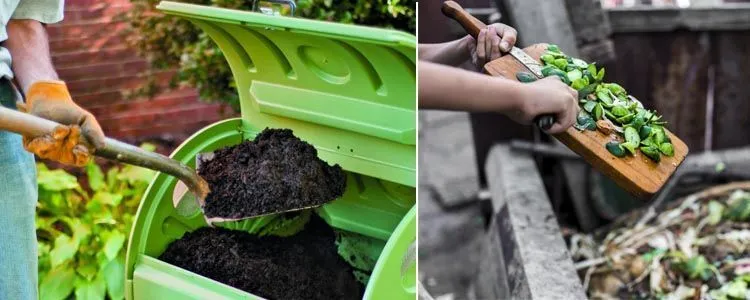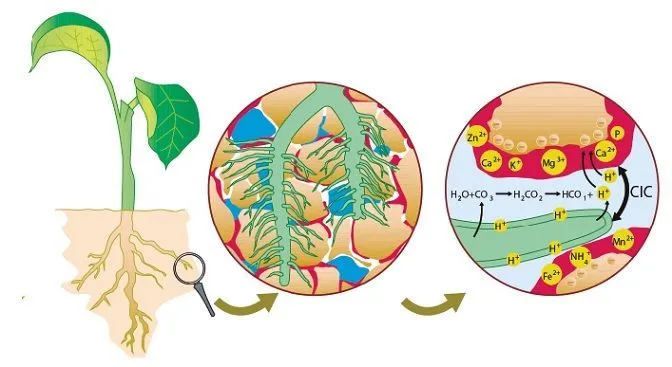An issue that especially catches our attention is the neglect that is had with the issue of soil quality, either in an orchard of medicinal plants or aromatic or in the substrate that is added to a pot. Not so much for the nutritional contribution that is given (which in itself is not very high) but for its soil-enhancing properties and its root enhancer.
When compost is mentioned, we also mean any other type of organic matter, humic extracts, vermicompost, manure, etc. In short, all the natural compounds that are obtained from waste.
Of all these examples, there are some very comfortable and cheap to produce, such as manure (where animal help is needed), compost (vegetable waste, kitchen, paper, etc.) or vermicompost (the same as compost but with the help of earthworms).
In this article we want to tell you how to prepare compost and what we need for it, as well as the great advantages of using it in the field.
Table of Contents
How is compost prepared?
The composting process it is nothing more and nothing less than the decomposition of different types of organic remains (branches, leaves, food waste, straw and other natural elements) by means of microorganisms under a warm temperature and with a certain humidity.
The result is to obtain a product of dark color, earthy texture and practically without odor that provides the following benefits:
- It contains nutrients that are easily assimilated for plants.
- It activates microorganisms that work the soil and favors the development of the roots.
- Improves the moisture retention that plants need so much, especially in summer.
- Increases soil temperature (higher calorific value than any other substrate).
- It is totally free and can be totally ecological.

How do I feed my composter?
We cannot get an idea of the large amount of waste we can generate in a garden or even at home. Many of them are usable and have a second useful life if we manage to break them down and create organic matter from them.
Of course, to perform this operation, we do not need an industry or a processing plant, since we can do it with a simple composter purchased or manufactured by us.
Garden waste to use
- Fallen leaves in autumn
- Pruning remains of small branches
- Dried stems and remains of straw
As for pruning remains, we must avoid very thick branches that take a long time to decompose, as well as very lignified stems.
In case we want to use them, the pruning remains must be cut into small pieces to facilitate their composting and we need tools such as a branch crusher. In this comparison you can see some options of these tools that take up little space and have excellent functionality for making compost.
With the branch crusher, by making the lignified wood much smaller, it can degrade more quickly by the action of microorganisms, humidity and temperature reached in the compost pile
How does compost improve the soil?
As stated before, the incorporation of organic matter does not usually replace the contribution of fertilizers, except for those crops such as medicinal plants that do not have high nutritional needs.
To give an example, the average composition of the organic matter of animal origin, is as follows. Always in an approximate way:
- Total nitrogen: 0,7-2%
- Total phosphorus: 1,5-2 %
- Total potassium: 0,5-3 %
These are low quantities, but contributed in large quantities, they can replace fertilizer amendments. However, it is not our particular goal, as far as aromatic and medicinal plants are concerned. They may also contain traces of calcium, magnesium and micronutrients.
What we try to achieve with the compost input to the soil is to improve its properties. When we say properties, we put them all in the bag, biological, chemical and physical. On the one hand we provide a basic source of energy for microorganisms (remember that most of them are beneficial for plants), on the other betterWe harness the physical part of the soil so that microorganisms work even better.
This group of microorganisms act by stabilizing the pH, balancing the level of water and air and, ultimately, helping the root system to develop better.
1. We improve the drainage of the soil or our pots
Providing the ideal water, we manage to save since most of it is used at the root level. Neither does it get stuck causing rot in the roots, nor is it lost excessively in the soil or in the hole of the pot.
This is because there is a perfect balance between the gaseous and aqueous part of the soil, and that depends a lot on the level of micropores and macropores of the soil.
2. We heat the earth (by decomposition)
With this, we will reduce temperature changes between summer and winter, so there will be greater comfort for soil microbiology and its division capacity will be enhanced. It must be remembered that soil biology is everything. They break down nutrients and make them available to the plant, they improve the texture of the soil, providing that smell of wet earth so characteristic of a quality soil, and they make symbiosis with the roots, always for the benefit of the plant.
The ability to exchange nutritious elements with the root
One of the great examples to demonstrate the great importance of organic matter in soil is its cation exchange capacity.
To be able to explain the process that occurs in the soil (without us noticing), we have to pull some knowledge of chemistry. Basically the attraction between organic matter or clay and the rest of the minerals interesting for the plant is based on the electronic attraction between molecules.
Organic matter, such as compost, is negatively charged, so that to neutralize these charges, it tends to join (or complex) with cations, that is, positively charged elements. All those we see in the image (and much more, such as iron), are attracted to this organic complex, so that it serves as a means of transport to the root.
Once this complex reaches the root, an exchange of elements occurs again. The root has positively charged hydrogens that it replaces (always until neutralization) with the positively charged elements (cations) of the clay-humic complex. In this way, we have just disposed in the root of the plant, a large amount of mineral elements that it needs for its growth and development,

With regard to this it must be said, the great importance of compost or the humic complex of the soil and its ability to increase the efficiency of the nutrients provided by the farmer to the soil. The losses due to leaching or irrigation are much lower, since we have a means of direct complexation of nutrients towards the root.
In short, we have a cheap and efficient means to improve all soil properties and increase the efficiency of all the nutrients we bring to the plant.
Not only that, but it also takes advantage of those arranged in layers of the substrate where the roots are not able to reach, also, to capture elements encapsulated or blocked by soil conditions (or antagonistic elements).
